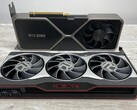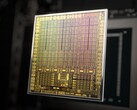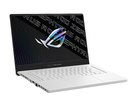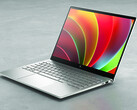After just two generations with the Max-Q name, Nvidia will be dropping it altogether for the GeForce 30 series and enthusiasts are already crying foul for understandable reasons. However, we want to take a closer look at some of the reasons that may explain why the chipmaker ultimately decided to let go of Max-Q.
1. Some GeForce Max-Q GPUs Were Already Outperforming Their Non-Max-Q Counterparts
A big reason why Nvidia introduced Max-Q in the first place was to allow for lower TGP targets which made it possible for OEMs to design ultra-thin gaming laptops. As time went on, however, some OEMs have been able to squeeze more performance out of their Max-Q GPUs to the point where they can run as fast or even faster than their non-Max-Q counterparts. The Razer Blade Pro 17 and its GeForce RTX 2070 Max-Q, for example, is actually 1 to 3 percent faster than the regular GeForce RTX 2070 in the Asus ROG Strix G15 even though the latter GPU is supposed to be the faster version. This discrepancy essentially nullifies the Max-Q name in the Razer system as it no longer becomes a reliable indicator of performance.
| 3DMark | |
| 1920x1080 Fire Strike Graphics | |
| Razer Blade Pro 17 RTX 2070 Max-Q 300 Hz | |
| Asus ROG Strix G15 G512LW | |
| 2560x1440 Time Spy Graphics | |
| Razer Blade Pro 17 RTX 2070 Max-Q 300 Hz | |
| Asus ROG Strix G15 G512LW | |
| 2560x1440 Time Spy Score | |
| Razer Blade Pro 17 RTX 2070 Max-Q 300 Hz | |
| Asus ROG Strix G15 G512LW | |
| 3DMark 11 | |
| 1280x720 Performance GPU | |
| Razer Blade Pro 17 RTX 2070 Max-Q 300 Hz | |
| Asus ROG Strix G15 G512LW | |
| 1280x720 Performance Combined | |
| Razer Blade Pro 17 RTX 2070 Max-Q 300 Hz | |
| Asus ROG Strix G15 G512LW | |
2. Mobile GeForce Names Will Be Much Simpler For Laymen Shoppers
When Nvidia announced Max-Q back in 2017, they effectively doubled their GPU SKUs as each step up would consist of two versions instead of one. In 2020, Nvidia announced mobile Super versions which doubled their GPU SKUs again. We complained about this last year as it was ridiculous to see "GeForce RTX 2080", "GeForce RTX 2080 Max-Q", "GeForce RTX 2080 Super", and "GeForce RTX 2080 Super Max-Q" options when shopping for gaming laptops. Their performance deltas can also be very minor between them at times which would inevitably lead to instances of our first reasoning above. Having four different names for GPUs that can overlap one another in performance is arguably unhelpful.
Attempting to explain why there are four different laptop versions each of the GeForce RTX 2070 or 2080 to an uninformed shopper at Best Buy would be a nightmare. In fact, many retailers and OEMs have been omitting "Max-Q" from their specification sheets anyway which further reduces the marketing need for the name.
3. It Will Likely Hasten Production And Reduce QA Costs For Both Nvidia and OEMs
Max-Q wasn't only about performance targets. At the time of launch, Nvidia made a big deal about its Max-Q certification process that OEMs had to adhere to. Laptops with Max-Q must not break certain fan noise thresholds when under ISO-7779 testing conditions, must be a certain thickness to qualify, and must operate at specific voltage ranges. Manufacturers and Nvidia would have to test all these standards for every Max-Q laptop model in addition to their usual QA procedures. Removing Max-Q would therefore streamline the process and give more freedom to OEMs when it comes to adjusting GPU clock rates, TGP, fan noise, and chassis design.
Of course, there are also several reasons why abandoning Max-Q might cause more confusion for gamers. Expect our top three reasons on the benefits of Max-Q soon as a counterpoint to our three reasons against Max-Q.












